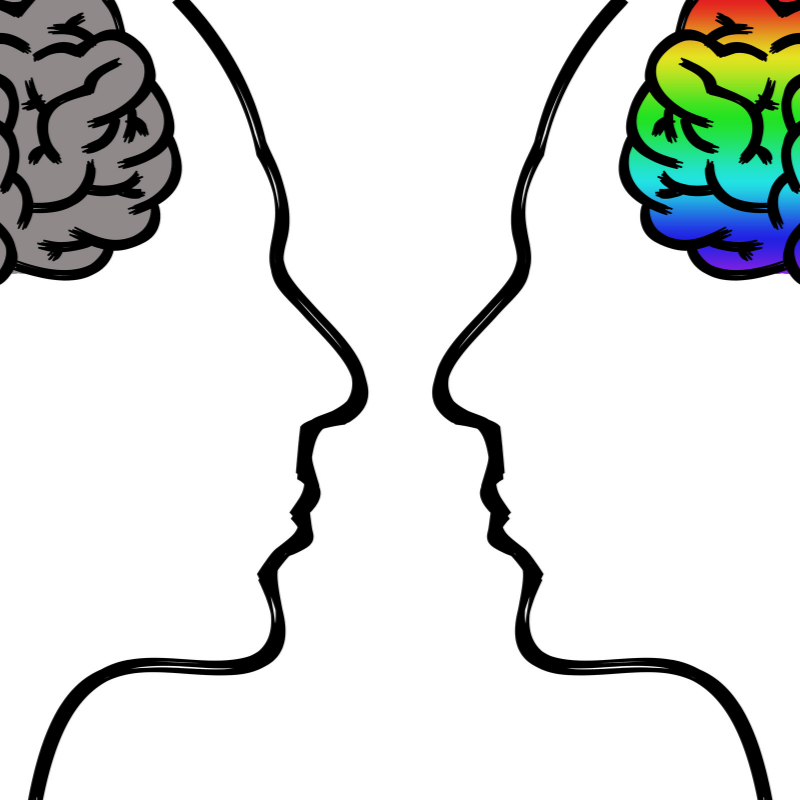Soothing the Amygdala
-Is the Amygdala Your Gateway To Wellbeing?
If you are doing some research on the Amygdala, You will soon realise that most studies about it are in relation to the fight or flight or stress response within our bodies. Sure, the Amygdala plays a big role in the activation of the fight or flight response in times of danger or stressful situations, but let’s explore ALL aspects of these two almond shapes residing deep within our brain and dive further into its relationship to our wellbeing and health.

The Amygdala is often described as two small nut-shaped nuclei residing deep within the temporal lobes of our brains. Often referred to as our “decision maker”, it helps us decide if situations are a threat or a benefit to us. For example: When we are in danger, the Amygdala activates the Fight or Flight response within our bodies so that we can deal with the threat at hand. Then, when the threat has passed, the Amygdala triggers the body’s relaxation response to calm our body and mind and get the body back to homeostasis.
Besides triggering the Fight or Flight and the Relaxation Response, the Amygdala is highly involved in storing our long-term memory. It is considered the brain’s emotional core because it’s an important task to help us store and memorise events and feelings.
HOW TO CALM THE AMYGDALA

Our senses play a big part in helping the Amygdala, and us, remember things. Our smell and hearing, for example, are directly connected to the Amygdala, which might be why a certain smell can stir up an old memory or emotion from the past in an instant.
Being reminded of good memories and positive feelings is a great thing! It triggers good feelings, activates the relaxation response, and makes us happy and at ease. On the other hand, an event triggering a negative memory can be the catalyst to stirring up a plethora of negative motions, (and thereby activating the fight or flight response) no matter if the threat is real or just in our minds.
Fight or flight is a useful response to survival in the event of danger as it helps us prepare the body for fighting or running away from the threat. However, suffering from anxiety or depression can cause the fight or flight to be activated constantly, which can be detrimental for our health. Negative stress and anxiety is like being afraid of something that is not an actual threat, and that can not be located in space and time. Therefore the relaxation response never clicks in to get the body back to homeostasis and keeps the body’s survival mode “on” which causes the body to become out of balance on both a hormonal and a neurochemical level. This form of stress puts tremendous pressure on our body and mind and can negatively affect us if we don’t learn to switch ourselves back to balance.
There are many ways to help soothe the Amygdala to activate the Relaxation Response and thereby trigger less of the Fight or Flight Response in our bodies. Studies are now showing that people being taught how to meditate, with no previous experience in relaxation techniques, can reap the benefits almost instantly and start firing up new circuits in the brain that evoke the relaxation response. Studies also show that the more we practise these techniques, the more we can benefit and activate these circuits in our everyday lives and thereby causing more ease and less stressful lives.
TECHNIQUES

Below is a selection of different techniques you can start using in your everyday life to evoke the Relaxation Response. Please explore these techniques further at your own device to see which ones feel right for you:
Breath Work
Your breath is a simple yet very effective way to bring in calm to your present moment. Many cultures have been using breathwork as part of their daily practice for thousands of years, but it is not until recent years the western world is beginning to understand its value. When your fight or flight response is activated, oxygen stops flowing to the rational part of your brain as well as your vital organs and moves towards your extremities and muscles (for energy). Learning to breathe deeply can help prevent this and send more oxygen to our brain and organs to promote body/mind balance.
Controlled breathing is an effective way to trigger the relaxation response within. You can simply focus on breathing deeply or use 4-part breathing (breathe in counting to 4, hold counting to 4, breathe out counting to 4, hold counting to 4 ) to name a few breathing techniques.
Muscle Tension/ Muscle Relaxation
Since the Amygdala is responsive to muscle tension, and tight muscle tension increases during fight or flight response, learning and practising muscle relaxation techniques can be very helpful. By performing and practising muscle tension/relaxation, we can start becoming aware of our bodies, recognise when we are tense, and swiftly take the body back to its natural, relaxed state.
Visualisation
Using imagery to help soothe the mind and body and enter a more relaxed state is a wonderful way to promote relaxation. We can do this by using guided meditation or close our eyes and picture ourselves in a place we enjoy spending time in. Using visualisation as a tool can help both calm your breathing and relax your muscles.
Meditation
There is no doubt that regular meditation practice promotes a healthy body and mind. Research has shown over and over again that an ongoing meditation practice can reduce various stress-related issues like anxiety, high blood pressure, panic attacks and insomnia. Meditation has also proven to have an immediate calming effect on the Amygdala. There are many different meditation techniques to explore, all with tremendous benefits that will keep on giving the longer you practise.
I hope you will see just how beneficial it is to add one or many of these practices into your day and decide to begin exploring how You can benefit from adding them into your everyday life! The more we perform these techniques, the better we will achieve a satisfactory level of relaxation in less time. My aim is that when you start to see the positive results they will have on your life, they will become as important to you as your daily brushing routine!
We can all feel stressed out, but we all can counteract that. When we understand this to be true, we can effectively soothe any imbalance within our minds and, thereby, in our bodies.
Madelaine Vallin
Learn to soothe the amygdala and change your life! Join our next course to get started.
Calendar
| M | T | W | T | F | S | S |
|---|---|---|---|---|---|---|
| 1 | 2 | |||||
| 3 | 4 | 5 | 6 | 7 | 8 | 9 |
| 10 | 11 | 12 | 13 | 14 | 15 | 16 |
| 17 | 18 | 19 | 20 | 21 | 22 | 23 |
| 24 | 25 | 26 | 27 | 28 | ||


